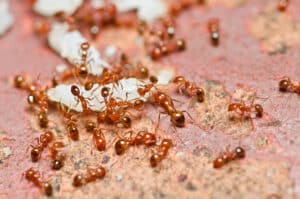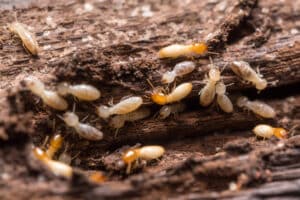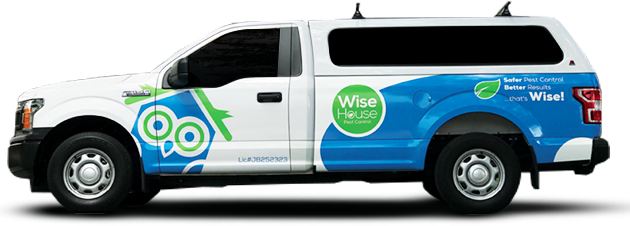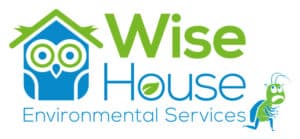Port St. Lucie residents often find themselves looking for answers on how to tell the difference between ants and termites. Ants and termites often get confused and learning exactly how to properly identify can be extremely helpful. Accurate identification of these tiny pests is important for effective pest management and ensuring the integrity of residential structures. In this blog post, we dive into the difference between ants and termites, equipping Port St. Lucie residents with the knowledge necessary to tell the difference between the two.

Generally, ants possess a three-segmented body consisting of the head, thorax, and abdomen. The thorax is notably constricted, giving ants their distinctive waistline. This segmented body structure enables ants to maneuver easily through tight spaces and navigate through various terrains very effectively and efficiently.
Antennae play an important role in ant communication and sensory perception. These appendages, typically elbowed or bent, contain numerous sensory receptors that allow ants to detect chemical cues, locate food sources, and communicate with other ants.
In regards to color, ants display a remarkable diversity, with hues ranging from jet black to vibrant reds and yellows. This variation often serves as a means of species identification, as different ant species may exhibit distinct color patterns or markings. For example, the invasive red fire ant (Solenopsis invicta) is known for its reddish-brown color.
Termites share some similarities with ants in terms of body structure but also possess distinct features of their own. Like ants, termites have a three-segmented body comprising the head, thorax, and abdomen. However, termites lack the pronounced waistline characteristic of ants, giving them a more cylindrical appearance.
The antennae of termites are straight and bead-like, contrasting with the elbowed antennae of ants. Termite antennae are highly sensitive to chemical cues, allowing termites to communicate with colony members and detect potential threats or food sources.
In contrast to the color seen in ants, termites typically exhibit a pale or translucent appearance. This color serves as camouflage, allowing termites to blend seamlessly with their environment and avoid detection.

Distinguishing between ants and termites is important in order for effective pest control management, especially in a region like Port St. Lucie where both ants and termites thrive. Understanding their distinct features, including body shape, antennae, wings, color, and behavior, can help residents properly identify these insects and take appropriate action when necessary. Whether it involves implementing preventive pest control measures or seeking professional pest control assistance, knowledge is key to safeguarding your home.
Q1: How can I determine if I have an ant or termite infestation in my home?
A1: Look for signs such as swarming insects with wings, discarded wings near windowsills or light fixtures, mud tubes along walls or foundations, or wood damage, as these are indicative of termite activity. Ants, meanwhile, may leave visible trails of foraging ants, especially in areas with food sources.
Q2: Do ants and termites cause structural damage to homes?
A2: While both ants and termites can cause damage to structures, termites are notorious for their ability to wreak havoc on wooden elements, leading to extensive and costly damage over time to a home.
Q3. Are there home remedies for controlling ant or termite infestations?
A3: While natural remedies such as diatomaceous earth or boric acid may help deter ants, they are generally less effective against termites. Professional pest control services are often necessary for comprehensive termite treatment.
Q4: How can I prevent ant and termite infestations in my Port St. Lucie home?
A4: Maintain proper sanitation by promptly cleaning up food spills and crumbs, seal cracks and crevices in your home’s foundation, and minimize moisture accumulation in and around your property, as both ants and termites are attracted to food sources and moisture-rich environments.

Ready to send away pests without harming your pets? Getting started with Wise House Environmental Services is as easy as 1-2-3:
With Wise House Environmental Services, you get more than just effective pest control; you get peace of mind, knowing that your home is without pests and safer for your pets.
Our approach to pest control combines science with safety, offering you the kind of targeted, effective solutions that you won’t find with just any other pest control service. Our services have made a world of difference for homeowners, and we can do the same for you. Your pets will thank you for it!
We serve Port St. Lucie,Lake Worth, Boyton Beach, Palm Beachand the Treasure Coast.


© 2023 All Rights Reserved. | Sitemap